The role of Epsom salt in gardening is debatable, especially regarding tomato cultivation. Popularly known as magnesium sulfate, Epsom salt can be used to enhance the growth of plants, increase the production of chlorophyll, and facilitate fruit development. However, its usage should be done with care. This guide aims at understanding the delicate equilibrium needed when applying Epsom salt on tomatoes by addressing common inquiries regarding its merits and demerits. By critically examining soil chemistry and plant health; we will give some practical advice that will help gardeners make informed decisions whether to use Epsom salts appropriately in their tomato gardens.
What is Epsom Salt and How Does it Benefit Tomato Plants?
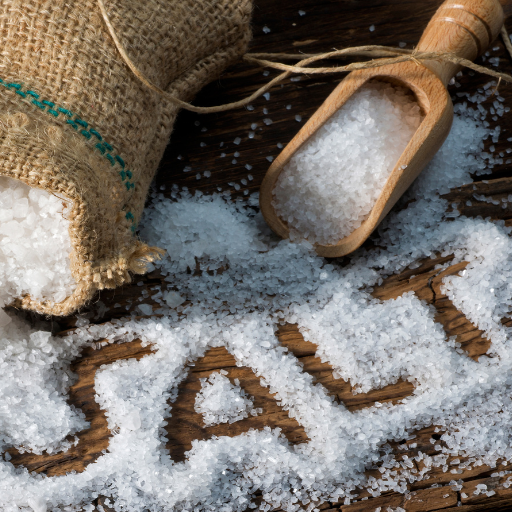
The salt of Epsom, or magnesium sulfate, comprises of oxygen, magnesium and sulfur. These components are very important for the growth and development of tomato plants. Magnesium is contained in chlorophyll which is responsible for photosynthesis so that sunlight energy is converted into sugar. Sulfur aids the production of significant enzymes, vitamins, and amino acids. By supplementing their soil with Epsom salts gardeners can correct low magnesium levels that would otherwise exist leading to increased chlorophyll production, more robust foliage and better fruit set. Nonetheless it is crucial to carry out a soil analysis before application in order to prevent excessive levels of magnesium that may upset other essential nutrients balance.
Understanding Epsom Salt Composition
Epsom salt is composed of magnesium, sulfur and oxygen compounded with seven water molecules constituting the formula MgSO₄·7H₂O. Different components have specific functions in the physiological processes of tomato plants:
- Magnesium (Mg²⁺): Magnesium is a vital element required for chlorophyll synthesis which helps in photosynthesis process that occurs when plants change light to chemical energy. For the photosynthetic process to occur, one molecule of chlorophyll contains only one magnesium ion thus making it very important.
- Sulfur (S): Sulfur is an essential component present in some amino acids like cysteine and methionine from which proteins are synthesized. It also takes part in formation of vitamins (for instance, vitamin B1) and coenzyme.
- Oxygen (O₂): Oxygen though not directly absorbed from Epsom salt but is part of sulfate ion SO₄²⁻ which can be taken up by plants and used for various biochemical processes.
To apply Epsom salt effectively follow these technical guidelines:
- Soil Test: Conduct a full-scale soil examination to find out how much sulfur and magnesium already exists there. For tomato plants, optimum levels of magnesium usually range between 25-50 ppm (parts per million).
- Application Rate: According to soil test outcomes, dissolve one tablespoonful (about 14 g) of Epsom salt in one gallon (3.8 liters) of water and then apply it once a month during growing season at a rate equal to height per foot plant height. Additionally, you can use this solution on leaves by mixing 1 tablespoonful of Epsom salt with one gallon of water then spraying foliage every two weeks.
- Monitoring: Monitor plant response and soil nutrient levels regularly to maintain a balanced nutrient profile throughout the crop production period. Overapplication may result in imbalance, such as calcium and potassium uptake being affected by an excessive application of magnesium.
Following these technical parameters will enable gardeners to maximize the advantages of using Epsom salt while reducing its risks.
How Epsom Salt Does Help Tomatoes to Solve Magnesium Deficiency
Magnesium is an important element for tomato plants since it is a primary constituent of chlorophyll, which is vital in photosynthesis. In tomatoes, magnesium deficiency shows up as interveinal chlorosis where the areas between veins turn yellow while the veins remain green. Energy production within the plant may be impeded by this deficiency leading to retarded growth and reduced fruit yield.
Epsom salt is chemically known as magnesium sulfate heptahydrate (MgSO₄·7H₂O) with readily available magnesium and sulfur. It can easily alleviate symptoms related to lack of magnesium if properly applied hence improve on plant health. Technical parameters must therefore be observed so that there are no instances of overdose or nutrient imbalances.
Technical Parameters for Use of Epsom Salt:
- Soil Test: Soil testing should be done first to determine the initial levels of magnesium and sulphur. Optimal levels of magnesium for tomatoes are between 25-50 ppm.
- Application Rate: Dissolve 1 tablespoon of Epsom salts per foot of plant height in one gallon of water (3.8 liters). Apply this solution monthly during the growing season only.
- Foliar Feeding: For rapid correction of deficiency symptoms, dissolve 1 tablespoon Epsom salts in one gallon water and spray onto foliage every two weeks.
- Monitoring: There has to be consistent monitoring for both plant response as well as soil nutrient levels since excessive intake of magnesium interferes with uptake other essential nutrients such as calcium and potassium.
By following these parameters, tomato producers will use Epsom salt efficiently thus correcting any deficiencies in terms of Magnesium among others then enable vigorous growth and fruiting resulting into a balanced nutrition profile.
Enhancement of Nutrient Uptake by Sulfate
Sulfate ions (SO₄²⁻) play a vital role in increasing the rate at which plants take up essential nutrients. Being part of sulfur, sulfate is essential to the biosynthesis of amino acids, proteins, enzymes and vitamins. By enhancing nutrient uptake like phosphorus and iron and zinc micro-elements, its presence in soil helps in root formation and general plant health. Inadequate sulfate leads to retarded growth, chlorosis as well as reduced ecological resilience of these plants. Consequently, maintaining optimum levels of sulfate in the soil is the key towards realizing balanced plant nutrition and strong growth.
How Much Epsom Salt Should You Use for Tomato Plants?
Optimal levels of Epsom salt for tomato plants depends on how it is used. To apply the mineral into soil generally, a tablespoon (14 grams) of Epsom salt per foot of plant height should be dissolved in one gallon (3.8 liters) of water and this solution should be administered once in every month throughout the period of growth. On the other hand, foliar feeding can be done by dissolving one tablespoonfuls of Epsom salts in a gallon of water spraying this on foliage every two weeks. The result will be rapid relief from magnesium deficiencies. Monitoring plant reaction will ensure correct dosage and avoid nutrient imbalances that might damage your crop. If properly employed, this regime helps maximize yield as well as enhance tomato plant health.
Tomato Plants’ Optimal Epsom Salt Dosages
Evaluating optimal concentrations of Epsom salt for tomatoes is crucial in addressing nutrient deficiency problems effectively. When applied to soils, add a teaspoonful (14 grams) worth of Epson salts per foot in height into a gallon (3.8 litres) volume and do it once monthly on the ground surface coverings. Alternatively, blend one table spoon full with a gallon of water and spray it on leaves every 2 weeks for leaf feeding purposes. This procedure offers an immediate remedy to magnesium starvation symptoms. Avoid over application since soil nutrients may become unbalanced with too much Sulfates and Magnesium, leading to poor soils which eventually affect yield through such vital nutrients as calcium potassium being unable to get through resulting into stunted plants or even diseases related to malnutrition etc., depending on what has been suppressed thus causing no harm at all.. Amount adjustment based on particular needs guarantees best health plus maximum output.
Common Mistakes in Using Epsom Salt on Soil
One common mistake when using Epsom salt for gardening is using too much which can result in the imbalance of nutrients and harm to plants. Excessive use can cause build-up of magnesium and sulfate ions, which may prevent plant from absorbing other vital elements such as calcium and potassium hence leading to poor growth and low yields. Another mistake is failing to carry out soil analysis before applying it. They may apply Epsom salts without awareness of the current nutrient levels; this further exacerbates matters instead of making them better. Lastly, irregular timing and methods of application may not effectively counteract deficiencies by delivering an even supply of nutrients or worse still may subject the plants into stressful conditions during growth. Hence, a well-targeted approach that is based on accurate soil testing plus careful monitoring must be taken into account since otherwise desirable benefits could have destructive side effects at all.
Ways to Know That You Have Used Too Much Epsom Salt
When there is too much Epsom salt applied, there are several plant signs that can be noticed which often indicate magnesium toxicity or nutrient imbalances. These include:
- Yellow and Brown Leaves: This condition occurs when the edges of a leaf turn yellow, known as leaf scorching, due to a deficiency of calcium and potassium nutrients that help the leaves function properly.
- Inhibited Growth Rate: Magnesium overdose results in poor iron and manganese absorption ability by plants leading to retarded growth and quality decline.
- Salt accumulation in Soil: This may appear as visible salt built up on the surface of the soil, further affecting root water uptake and causing dehydration stress and inefficient root growth.
Various studies in horticulture document these signs, proving the need for accurate application rates and precision monitoring. For example, studies have shown that if magnesium levels exceed 0.5% dry weight in plant tissues, toxicities can occur. In order to prevent or correct overuse of Epsom salts, for instance, through regular soil testing, watching out for symptoms of your plants should be observed regularly.
Can Too Much Epsom Salt Damage Your Tomato Plants?
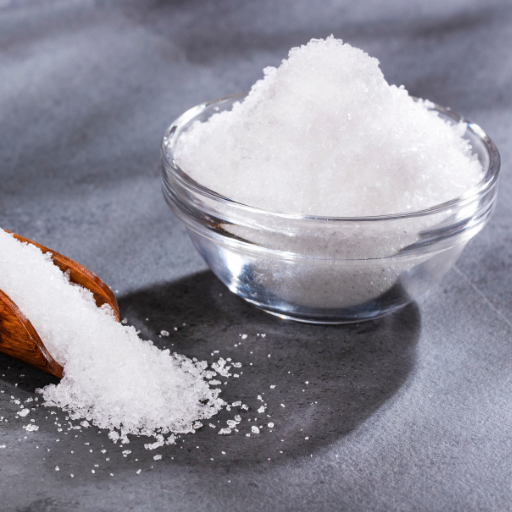
Tomato plants are vulnerable to destruction by Epsom salt overdose. In this case, the excessive use can cause an imbalance of nutrient levels in the soil leading to magnesium toxicity which in turn results into poor uptake of important nutrients like calcium and potassium. Therefore, salt accumulation in the soil together with yellowing and browning of leaves as well as stunting growth impede the healthy state and productivity of plants. As a consequence, it is necessary to constantly evaluate the negative influence these effects have on yield by allowing frequent assessments of soil quality and sticking to recommended rates.
Signs of Excessive Use in Tomato Plants
This paper reveals that applying Epsom salt excessively on tomato plants may be dangerous due to some manifestations which are confirmed indicators for unbalanced nutrition. Some key symptoms to monitor include:
- Yellowing and Browning of Leaves: Magnesium toxicity usually begins with leaf chlorosis or yellowing. The presence of too much magnesium hinders the plant’s ability to absorb essential nutrients such as calcium and potassium, leading to yellow leaves that eventually turn brown as the tissue dies off.
- Stunted Growth: Too much magnesium upsets the nutrient balance, causing slow growth. Plants cannot get enough nutrients for their development, so they look smaller and less vigorous than normal ones.
- Salt Accumulation: Due to high amounts of magnesium sulfate, there could be visible accumulations of salts on topsoil surfaces. When salts accumulate, root dehydration occurs, further slowing root water uptake.
According to studies conducted by horticultural sciences experts, maintaining balanced soil chemistry is critical for growing crops successfully. In addition, levels should not exceed 0.5% Mg on a dry weight basis in tissues to prevent toxicity (Rose et al., 2003). Routine testing is highly recommended, while other observations should be carried out about plant health so as not to keep track of visual representations only, most especially if one desires better management strategies for nutrient contentions based on signs from the soil.
Impact on Soil Health and Nutrient Balance
Excessive use of Epsom salt can greatly disturb soil health and nutrient balance, hence its careful management. Excessive magnesium sulfate can cause soil compaction, leading to aeration and infiltration capacity reduction. This, in turn, restricts root growth, hindering plants’ access to vital nutrients and water.
High levels of magnesium interfere with the uptake of calcium and potassium which are important for proper plant development from a nutrient balance perspective. Data obtained from soil analysis suggests that ideal magnesium concentrations should be 10-15% of the soil’s cation exchange capacity (CEC). Magnesium levels above this range out-compete calcium and potassium hence they get absorbed by plant roots resulting into deficiency of these vital nutrients. Thus, it is critical that proper magnesium ratios are maintained in order to promote soil fertility.
In addition, high amounts of magnesium may contribute to soil salinity. Increased salinity negatively affects microbial activity in soils essential for organic matter decomposition as well as nutrient cycling. Therefore, maintaining an electrical conductivity (EC) level below 2 dS/m in soils is helpful towards preventing salinity stress. Regular soil testing coupled with balanced fertilization practices is important in mitigating these impacts that damage healthy soil ecosystems.
Identifying Salt Buildup in Garden Beds and Pots
Identifying salt buildup in garden beds or pots involves several indicators that reveal the presence or absence of salinity conditions. Some visual evidence includes incrustation around pot edges or white deposits on the surface earth. Such deposits result due to evaporation leaving behind accumulations of salts behind. Moreover, plants under saline conditions usually display retarded growth, yellow leaves (chlorosis), tip burn on leaves arising from osmotic stress impaired water uptake ability.
To ascertain if salt has built up, a ground-based test for saltiness must be done. This means measuring how conductive the soil is, i.e., how much salt it contains. An EC value above 4.0 dS/m is high and could result in severe plant stress, while values between 2.0 and 4.0 dS/m denote moderate salinity, which is harmful to sensitive plants.
Regular leaching of soil with plenty of water helps minimize salt buildup. Ensure thorough drainage so as to allow salts to be washed away from the root zone. For garden beds, gypsum (calcium sulfate) can increase soil structure and enhance salt leaching efficiency. Optimal irrigation measures like avoiding watering during the hot midday periods to reduce evaporation rates also minimizes salt accumulation risk. Therefore, maintaining equal intervals between irrigations ensures that salts are continuously flushed out thus creating a better environment for plants during growth periods.
How to Correct Epsom Salt Overuse in Your Garden?
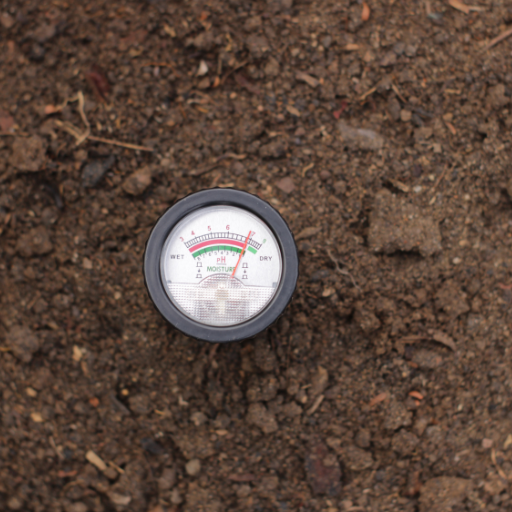
To fix the misuse of Epsom salt in your garden, one needs to take several steps to put back soil balance and save plant health. Start by thoroughly irrigation the affected area so as to dilute and wash out excess magnesium sulfate. Make sure that there is adequate drainage to avoid waterlogging which can worsen this scenario. It is necessary to mix in some organic matter like compost in order to enhance soil structure and encourage good microbial activity. Perform a soil test for nutrient content and adjust fertilizer application accordingly. Do not add more Epsom salts until soil gets well again, closely watching plants response for signs of rejuvenation;
Steps to Flush Excess Epsom Salt from the Soil
- Irrigate Thoroughly: Start by watering the soil with lots of water to dilute and spread too much magnesium sulfate out of the root zone. For deep penetration, give it 1-2 inches of water slowly.
- Ensure Proper Drainage: Your soil should drain well. Poorly drained soils can worsen the accumulation of salt. To facilitate better water movement, consider installing drainage systems or using raised beds.
- Incorporate Organic Matter: Introduce organic matter, such as compost or well-aged manure, into your soil to enhance its structure and improve leaching processes. Organic matter increases soil permeability while enhancing water retention, which allows beneficial microbes to decompose excess salts.
- Gypsum Application: Apply gypsum (calcium sulphate) at a rate of 20–50 pounds per 1,000 square feet. This helps in improving soil structure by displacing sodium ions with calcium ions and reducing magnesium sulfate levels.
- Monitor Soil pH: Carry out soil tests for pH levels and nutrients to determine what steps need to be taken. A pH range between 6.0 and 7.0 is ideal for most plants; thus, add lime or sulfur gradually so as not to drastically change soil pH, according to test results.
- Adjust Irrigation Practices: Maintain a consistent irrigation schedule so that you regularly irrigate out salts. Avoid watering during peak evaporation times (midday) in order to reduce salt concentration in the root zone. Drip irrigation is particularly useful because it directly delivers water where it is needed, reducing evaporation.
These steps have been carefully deduced from comprehensive analysis and resources on how one can address negative repercussions caused by excessive application of Epsom salt on garden soils when put together they provide a sequential scheme for dealing with overdoses that have occurred as an outcome of usage of Epsom salt in garden soils. Keep assessing the soil with regard to the results of the tests in order to maintain a healthy growing environment.
Soil Nutrient Balance after Overuse
In order to balance soil nutrients after excessive application of Epsom salt, an approach that is targeted is required. For this reason a comprehensive soil test should be done to determine the status of the current nutrients. When it comes to plant health, nutrient imbalances can be detrimental and therefore it’s good we focus on the major ones:
- Nitrogen (N) Levels: Surplus use of Epsom salt could interfere with the nitrogen cycle. If necessary, ensure nitrogen availability through appropriate fertilization. Technical parameters: Then, you can use 10-10-10 or another fertilizer with an N-P-K ratio, like a balanced slow-release one, as recommended by soil tests.
- Phosphorus (P) and Potassium (K) Balance: Excessive magnesium levels from Epsom salts can disturb absorption of phosphorus and potassium. Inadequacy of these minerals calls for their application in form of fertilizers. Technical parameters: Superphosphate (0-46-0) or bone meal should be applied for phosphorous while potassium sulphate (0-0-50) can also be used.
- Micronutrient Availability: Too much magnesium may affect micronutrient uptake involving calcium, iron, and zinc most essentially. A mixture containing micro-nutrients may be included if desired which must always maintain balanced levels of them. Technical parameters: Chelated micronutrient blend would be effective in plants mitochondria’s activity as they are easily absorbed.
These steps need to be substantiated through regular soil testing and plant health monitoring system. Therefore, adjustments should depend on test results with regard to providing essential growth conditions.
What Are the Best Practices for Using Epsom Salt in Your Garden?
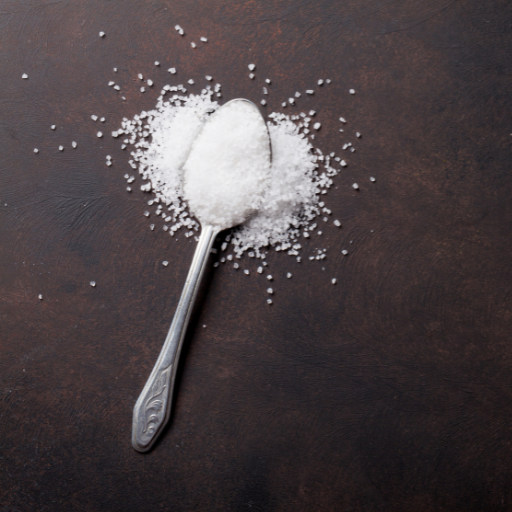
For effective use in a garden, it is paramount to first understand that Epsom salt has two main constituents: magnesium and sulphate. Magnesium is essential for photosynthesis and enzyme activity, while sulfate assists in nutrient uptake and synthesis of plant proteins. In gardens, Epsom salts are often used as a remedy for magnesium deficiencies which can be characterized by yellow leaves and retarded growth.
Firstly, establish the need for Epsom salt through soil testing. For deficiency treatment, mix one tablespoon of Epsom salt with one gallon of water and apply it directly into the soil at the base of plants once every two weeks. When sprayed on leaves, you should have a more diluted mixture of (one teaspoon per gallon of water). Moreover, tomatoes and roses may benefit from Epsom salt because they require higher amounts of magnesium. However, excess use can lead to imbalances in nutrients; thus adhering to the recommended dose is important as well as continuous monitoring soil health via tests.
Combining Epsom Salt with Other Fertilizers
By combining other fertilizers with Epsom salt, farmers can improve their quality in terms of nutrients availability and overall plant health. The principal components provided by this substance include magnesium and sulfur which supplement traditional nitrogen-phosphorous-potassium (NPK) complex fertilizers. For example,mixing balanced NPK fertilizer with Epsom salt results in greater chlorophyll production that favors improved nutrient utilization among others. This requires gardeners to mix their granular or liquid fertilizers as per package instructions but including some amount of Epsom salts evenly within them.Since slow release fertilizers don’t provide magnesium regularly through growing season using them together with Epsom salts ensures an even supply throughout this period.However over-application should be avoided so as not lo lead possible nutrient imbalance in the soil.Good farming practices include constant monitoring crop health conditions alongside regular soil analysis.
Timing and Frequency for Epsom Salt Application
When it comes to plant growth and development, the correct timing and frequency of Epsom salt application are very important. Epsom salt is usually applied at the beginning of the growing season to supply the initial magnesium and sulphur boost required by plants. Subsequent applications should be given every two to four weeks during the growing season, depending on specific plant needs and soil conditions.
For most garden plants, a bi-weekly application of one tablespoon of Epsom salt per gallon of water is recommended. Alternatively, leaves can be sprayed with a more diluted solution of one tsp Epsom salt in 1gallon water after every fourteen days when foliar feeding is wanted. The monthly side dressing may consist only one tablespoon dry Epsom salts per foot of plant height for tomatoes and peppers that require extra magnesium supplies.
To avoid leaf burn and maximize nutrient absorption, it is important to apply them during cooler parts of the day, like early morning or late evening. Monitoring soil fertility levels and crop health through regular testing will aid in determining whether changes should be made regarding application frequency or dosage. Besides this, balancing the use of other fertilizers with that of Epsom salts maintains a balance nutrient profile hence preventing any possible imbalances that could arise thereby fostering strong plants.
The Significance of Soil Testing before Applying Epsom Salt
Soil testing is a highly recommended step to consider when incorporating Epsom salt into gardening activities. The main objective of soil testing is to determine the quantities of magnesium and sulfur present in order to establish if more supplements need to be added. These parameters include pH level, nutrient content, and soil texture, which affect the absorption and action of Epsom salt.
Soil tests usually determine the pH of the soil that should range between 6.0 and 7.0 for most plants. Outside this range, it can limit nutrient uptake making applications with Epsom salts ineffective. Nutrient content analysis specifically focuses on magnesium (Mg) and sulfur (S) levels; optimal concentrations for magnesium should range from 200-300 ppm while sulfur levels should be around 10-40 ppm.
Accurate data from soil tests help customize the application of Epsom salt, thus avoiding overuse, which can result in nutrient imbalances leading to toxicity. This precision enhances plant health and growth, hence making soil testing an irreplaceable practice in sustainable agriculture.
Are There Any Risks or Drawbacks to Using Epsom Salt in Your Vegetable Garden?
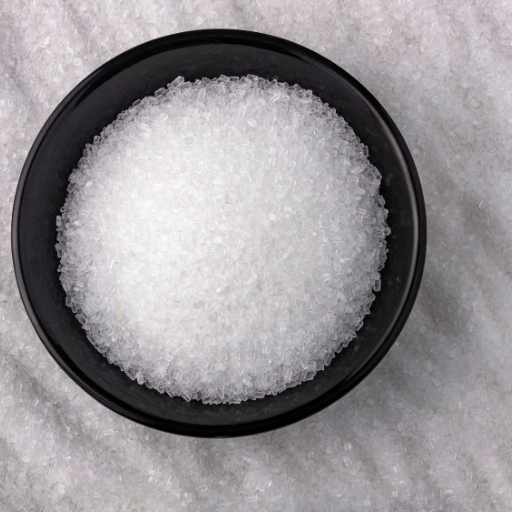
At a time of proper application, Epsom salt can be helpful; but its use in vegetable gardens has some potential pitfalls and limitations. Overuse of Epsom salt might result in magnesium build up in the soil, which can affect calcium and potassium absorption by plants. This imbalance may have adverse effects on crop yields and plant health. Also, excess magnesium could compact soils and cause poor drainage that inhibits root growth and water holding capacity. Additionally, if gardeners don’t test soil for suitability towards this product; they might apply it unnecessarily leading to nutrient toxicity. Thus, precision with caution using tested soils yields balanced nutrients profiles with good plant development.
Potential Diseases Associated With Excessive Use of Epsom Salt
The excessive use of Epsom salts in vegetable gardens may create conditions that make plants more susceptible to several diseases. Soil compaction caused by too much magnesium reduces air circulation and movement of water into the soil hence promoting root rot such as Phytophthora and Pythium infections. The pathogens are found mostly on soils with poor drainage where significant damage could occur to the roots leading to stunted growth before eventual death occurs to the plant. Moreover, a prevalence of fungi infections such as Fusarium wilt is high due imbalance in soil nutrients from increased levels of Magnesium content thereby reducing plant ability for immune response.In this regard maintaining soil health through controlling the use of epsom salt will prevent proliferation of diseases.
Long-Term Impact on Soil and Plant Health
Prolonged misuse often results in various harmful effects on both plants as well as soils respectively thereafter.Magnesium sulfate applied continuously leads to soil acidification thus disrupting required pH balance for optimum nutrient availability.Thus high concentrations of magnesium for example interfere with uptake mechanisms innate within the cell walls necessary for most elements like calcium along with phosphorus among others resulting in nutrient imbalances or possible deficiencies.It is frequently assessed through CEC (Cation Exchange Capacity) that shows extent at which soil can hold various kinds of nutrients.
Also, soil porosity will decrease with time due to high levels of magnesium causing compaction. This interferes with root penetration and water infiltration, crucial for the proper growth of healthy plants. According to the technical recommendations,most plants require a soil pH range between 6.0 and 7.0, and any deviations from this can worsen nutrient imbalance-related problems.
In addition, normal functioning of plants can be compromised when magnesium is excessively used leading to lower disease resistance towards diseases and insects.Consequently, there’s an inhibition of iron absorption caused by increased concentration of magnesium blocking chlorophyll synthesis leading to chlorosis therefore decreased photosynthetic potential.In order to correct these deficiencies it becomes necessary for farmers to carry out regular soil tests while adhering with recommended rates of application.Accordingly,the recommended dosage ranges from 1-2 pounds per 100 square feet annually based on the crop type and the condition of the land.
Frequently Asked Questions (FAQs)
Q: Can you add too much Epsom salt to tomato plants?
A: Yes, adding too much Epsom salt can harm tomato plants. While epsom salts are good for providing magnesium and sulfur, excessive amounts can interfere with the calcium uptake, leading to issues like blossom end rot and magnesium toxicity.
Q: How does Epsom salt help with the growth of tomato plants?
A: Epsom salts in water supply magnesium and sulfur, essential micronutrients for plants. Magnesium plays a crucial role in chlorophyll production, while sulfur is necessary for various plant functions, leading to healthier foliage and bountiful fruit.
Q: What are the signs of too much Epsom salt on tomato plants?
A: Tomato plants affected by too much Epsom salt may exhibit leaf yellowing, reduced fruit size, and overall poor growth due to inhibited nutrient absorption, such as calcium, which contributes to blossom end rot.
Q: Can Epsom salt prevent blossom end rot in tomatoes?
A: Epsom salt alone cannot prevent blossom end rot, which is often due to a calcium deficiency. Ensuring proper watering and providing adequate calcium through amendments like dolomite lime or gypsum can help.
Q: How much Epsom salt should you use per tomato plant?
A: A generally recommended amount is 1 tablespoon of Epsom salt dissolved in a gallon of water per plant, applied as a foliar spray or watered into the soil during the growing season.
Q: When should you apply Epsom salt to tomato plants?
A: Epsom salt can be applied during the seedling stage and throughout the growing season. Applying it during seed starting can help with germination, while consistent application during growth supports overall plant health.
Q: Can Epsom salt be used with other fertilizers?
A: Yes, Epsom salt can be used alongside other fertilizers. For balanced nutrition, it is essential not to overuse any one supplement. Combining it with compost, balanced fertilizers, or organic options will support overall plant health.
Q: Is blossom end rot caused by too much Epsom salt?
A: While not directly caused by Epsom salt, excessive use can contribute to blossom end rot by impacting calcium absorption in the soil. It is crucial to strike a balance and ensure all nutrients are adequately provided.






